
**UPDATE** This post was updated to add some more details as the to changes (or possibly the lack there of) we see in videos of the prototype Vessyl. Click here to jump down to it.
In case you have never heard of it, the Vessyl became available for pre-order in mid 2014, marketed as a cup that knows what you put in it. Pour water into it, a builtin display says “water”. Pour Coke in your Vessyl and it says “Coke”. Vessyl’s website claims that the cup and it’s app can help you “sleep better” and even “build muscle”. It does this by analyzing what you drink at the “molecular level” (in “real time”, I might add) and using that information to help you stay hydrated and eat (drink) better.
While it might be hard to believe how a cup could sell that requires its users to drink exclusively from it, has a battery that needs charged and costs $149, that has not stopped Mark One, Vessyl’s maker from raking in over $1 million for pre-orders and $3 million in venture capital.
Related: Why Does The Vessyl Show The Same Nutritional Info for All Beverages?
But is a cup that knows what’s in it too good to be true? (Or perhaps just superfluously superfluous.) Well, you may be right. The Vessyl has been available for pre-order since around June, 2014 and at that time had a promised, yet vague, delivery date of “early 2015”. However, as of the writing of this post, neither a finished product nor even a specific shipping date are to be found.
So what happened to the Vessyl? In March, 2015, close to the original shipping date, Vessyl’s maker’s announced that they would need more time to “optimize the interior materials” which have “a large impact on the accuracy and dependability” of the Vessyl. At that time a new, and similarly vague shipping date of “early Q4 2015” was set.
In the following months, updates on Vessyl’s blog would continue to allude to problems with accuracy: “the Mark One team has been testing additional interior material options, while monitoring how they interact with the current sensors…” and “With the sustained focus on sensor improvements…”.
June’s update, however, seems the most telling: “Our current goal is to determine the right solution for our sensor accuracy issues“. It is ironic that the Vessyl was suffering accuracy issues as the only thing that sets the Vessyl apart from, say a $5 travel mug, is the Vessyl’s ability to accurately sense liquid at a “molecular level” in “real time”. One wonders how even after the promised shipping date and millions of dollars later, the Vessyl was still unable to dependably accomplish its only task.
And for the Vessyl, sensor accuracy is much more important than for other health/fitness trackers. For example, a Fitbit has some room for error. If it misses a few steps or a few heart beats, no one notices because no one is counting their every step or heartbeat. However, Vessyl users know exactly what they drink, and will be auditing the Vessyl’s accuracy with every single use.
Any product that’s primary function is to tell its user what they just did, must be extremely accurate or it will otherwise be the subject of hate and frustration. Siri’s saving grace is that it is only a small part of what the iPhone does, and the user doesn’t depend on it to use the smart phone. If Siri was the only thing the iPhone did, her infrequent inaccuracies would quickly define the entire iPhone. Similarly, any inaccuracy in Vessyl’s sensors, even if infrequent, will be sure to inspire hate and frustration.
When “early Q4 2015” arrived, the Vessyl didn’t.
Instead, purchaser’s received an email, which this Vessyl backer tweeted:
“In the coming weeks, we’re going to make a decision and send an announcement“ @myvessyl ain’t shipping pic.twitter.com/TbeDEA6Arx
— Corey Donohoe (@atmos) October 8, 2015
Perhaps the most telling portion of the letter is this seemingly innocuous statement: “In the coming weeks, we’re going to make a decision and send an announcement”. What is the “decision” that needs to be made? The context doesn’t give us any clues, however, something that Justin Lee, Mark One’s CEO, said in an interview might.
“The company is using this extra time to perfect ‘all of the original features that were messaged around the first generation product,'”
While at the time Lee reiterated his companies intention of delivering on what they had promised, the use of the term “messaged” seems to add some vagueness as to what features they actually promised. So what does this tell us about the “decision” alluded to in the email? While we can’t say for certain, one possibility is that they need to decide whether or not to ship a product that doesn’t meet the expectation they set with their promotional material. Or, they may decide to delay once again with the hopes of solving the smart cup’s issues in order to deliver on all of the “messaged” features.
Social Media Reacts, But Vessyl Doesn’t
When the email notifying those who pre-ordered was sent out, many of the backers took their angst to Twitter:
@myvessyl i purchased 2 of these in July 2014. i <3 ur tactic. delay until people stop caring. when do you plan on shipping? — shayaansiddiqui (@shayaansiddiqui) October 12, 2015
Yeah, @rulandos I worry that the #vessyl crowd funding appeal was a #scam — Angela Sargent (@Europax_x) August 6, 2015
@myvessyl If you delay shipment of the Vessyl again, please send a link to cancel orders. #vessyl #delayofgame — Matt Krumm (@macgyver4ever) October 8, 2015
Canceled my Vessyl pre-order. #takingtoolong #vessyl #hasntdelivered #failedkickstarter #probablyascam — Joe (@Joeisms85) August 11, 2015
At about the same time the email went out, the Vessyl’s social media accounts seemed to go silent. Previously, refund requests and complaints were quickly responded to with a polite message instructing how to go about getting a refund, or reassuring that an update would come soon. As of now, however, these tweets and Facebook comments are going unanswered. A comment on Vessyl’s Facebook page stated that Vessyl has not “replied to any other emails after” October 9th.

Did the Vessyl Ever Exist?
All of this leaves us to wonder, what was the cup that we saw in Vessyl’s video, posted in June of 2014? Was it nothing more than a cool concept?
If you take a look at the product’s marketing and hype, it is primarily focused on the cup’s display and the benefits of using the cup. Strangely absent is any in depth presentation of the technology behind the Vessyl. The most that Mark One will say is that the technology is proprietary and that it can analyzes liquid at the “molecular level”. Even despite the delays caused by “sensor issues,” Vessyl’s blog posts only briefly mention the sensors, and focus mostly on the improvements to the aesthetics, and health benefits.
It leaves one to wonder if Mark One put the cart before the horse by first designing a cool looking cup with a cool display, “messaged” that cup, and then work on creating a functioning product that fit inside the already marketed cup. If so, Mark One may now it finds itself in the awkward position of having a product that doesn’t look like what was messaged.
So does Vessyl have a working cup? The answer is actually yes, just click play to watch it in action: (Update, the answer appears to be No.)
The article associated with the video is dated March 27, 2015 and shows a bulky cup and an iPhone app. A variety of drinks are on a table and Justin Lee pours one (nearly all of it) into the Vessyl, places a lid on the smart cup and we see that the app displays the contents of the cup.
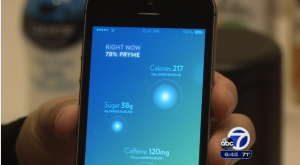
So if there is a working Vessyl, why hasn’t Mark One begun shipping them? While we can’t know the exact reason for certain, we can make some educated guesses. But first, we need to take a closer look at how the Vessyl works.
**UPDATE** After posting this article I came across a video of a Vessyl prototype posted by Forbes from June 12, 2014. In the video we see a Vessyl that appears to be identical to the one in the video above from March 27, 2015, over nine months later. Here are stills from both videos, side by side: (The third one on the left side is from this June, 2014 article.)
Vessyl – June, 2014 Vessyl – March, 2015
The two cups appear to be identical and may even be the same cup. Why are they using a Vessyl in 2015, near the planned shipping date, that looks identical to the one they used around the time they launched their campaign? The cup on the left is from before Mark One raised millions of dollars, the cup on the right is after receiving millions in dollars and after nine months of development. Why is the Vessyl used in a 2015 interview not closer to resembling the final product?
Vessyl backers have asked Mark One for a video of the current Vessyl, but, as far as I know, one has yet to be made. If you are aware of a newer video of a working prototype, please contact me so that I can update the post.
How does Vessyl work?
Mark One has been very vague about how the Vessyl is able to know not only what was poured into it, but also the amount of calories, sugar, caffeine, etc. When asked directly, they usually deflect, saying that the sensors are “proprietary” and “are in the same realm of technology as quality control in the food industry.” This has lead to much speculation, but no clarification directly from Mark One.
While Mark One is not divulging the technology, OurCrowd, (one of their investors) does provide some clarity:
The Vessyl, uses a spectrometer to identify the contents of the cup. Most likely Vessyl’s spectrometers work by shining a light (of some sort) on the liquid in the cup and then use the light that is reflected back to create a signature. (Did you notice in the video how Lee placed the lid on the Vessyl after he poured in the liquid? This may have been to prevent other light from interfering with the analysis.) The signature represents the molecular makeup of the liquid, but it probably doesn’t immediately inform the app as to the amount of, say caffeine. This would be done when the signature is sent to a server (via the app) where it is fed into Mark One’s “signal processing algorithms” which interpret the results and sends information, such as the beverage name and content breakdown, back to the app.
In the Forbes video at about the 18 second mark, we can see the spectrometers shining light into the cup. As you can see in the still below, there is a blue glow coming from the cup, this is likely the spectrometer analyzing the liquid:
Now that we know that the Vessyl uses a spectrometer, what kind of “sensor accuracy issues” might be holding up production?
It Exists, So Why isn’t it Shipping?
Without any more details we are left with now choice but to speculate. While I am no expert in spectroscopy, I will offer up a few possibilities based on some basic research.
Miniaturization
The working Vessyl we saw above was much bulkier than the one Mark One advertised. This could be because Mark One had yet to produce or find a source for small, accurate and affordable spectroscopes. According to an article recently published in the journal Nature, most miniature spectrometers “rely on interference filters and interferometric optics that limit their photon efficiency, resolution and spectral range.” In layman’s terms, most small spectrometers have limited accuracy.
Affordability may also be an issue. The SCiO, which is a miniature spectrometer, is priced at $249, whereas Vessyl sold quite a few units for only $99 and is available for reservation at $149. The SCiO serves only one function, while the Vessyl is more complex, likely containing sensors to determine weight as well as accelerometers to listen for gestures. If the SCiO costs $249, is it possible for Mark One to provide more hardware at a lower cost, or could they have underestimated the cost of accurate miniaturized spectrometers?
**Update** Is the reason they used the same bulky Vessyl in both 2014 and 2015 interviews because of miniaturization problems? One would think that if they were able to make smaller sensors, they would have used a smaller Vessyl in later interviews.
Long Term Accuracy
Spectrometers rely on a consistent “light” source, however over time the light source or other environmental factors change, this leads to some spectrometers requiring regular calibration. Are the Vessyl’s sensors remaining accurate over time? Has Mark One discovered that over the long term Vessyl’s sensors need calibrating or lose accuracy and are working to address this?
The Interior Material
From Vessyl’s blog in April, 2015:
The details are very vague, but they allude to a problem is related to how the sensors (aka spectrometers) and the interior material interact. The spectrometers likely rely on the ability of light (on some spectrum) to pass through the interior material, reflect off of the liquid and return un-distorted. The material also needs to be safe to drink out of, as well as durable (ex, drop proof) and consistent both over time and when subjected to temperature changes. Could it be that Mark One cannot find an inner material through which its spectrometers can accurately read?
Final Thoughts
While I can’t say for certain whether the Vessyl will sink or float, I can tell you that if it does, here is what we can expect next from Vessyl’s creators:
Is it possible that we will soon see hipsters going to restaurants with picnic baskets full of their “smart” place settings, from which they must eat in order to diligently track everything that their body does? Will we see them lick their smart forks until they are clean so that they can switch food groups without any sensor accuracy issues? Will we find them in the restaurant’s bathroom washing their dishes so they are ready for their next meal?
Feel free to leave any thoughts, corrections or additional information in the comments.
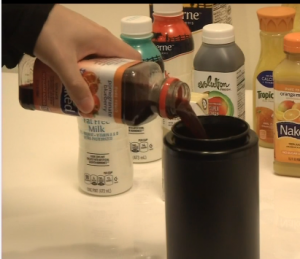
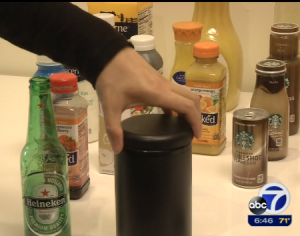
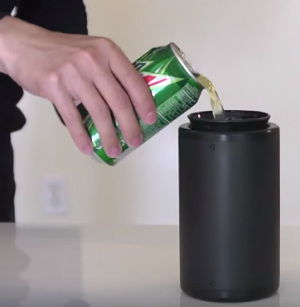
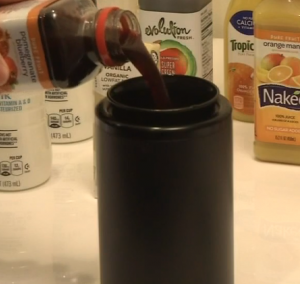
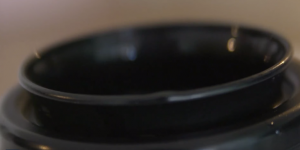
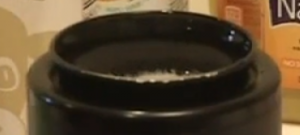
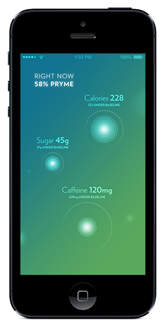
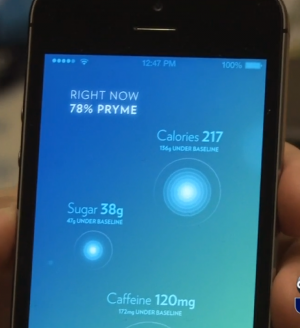
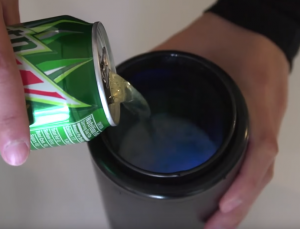
Leave a Reply